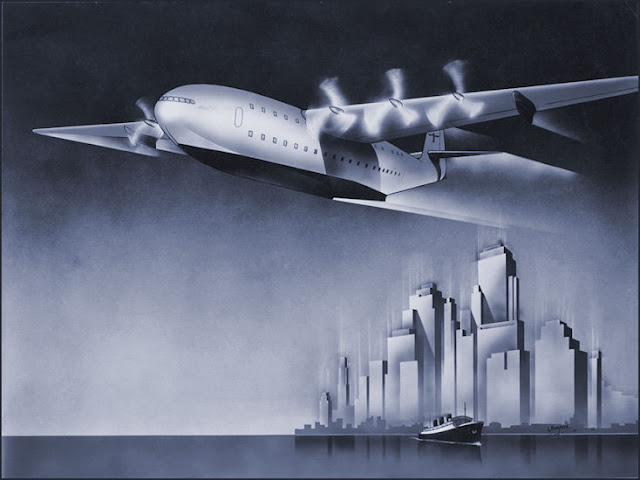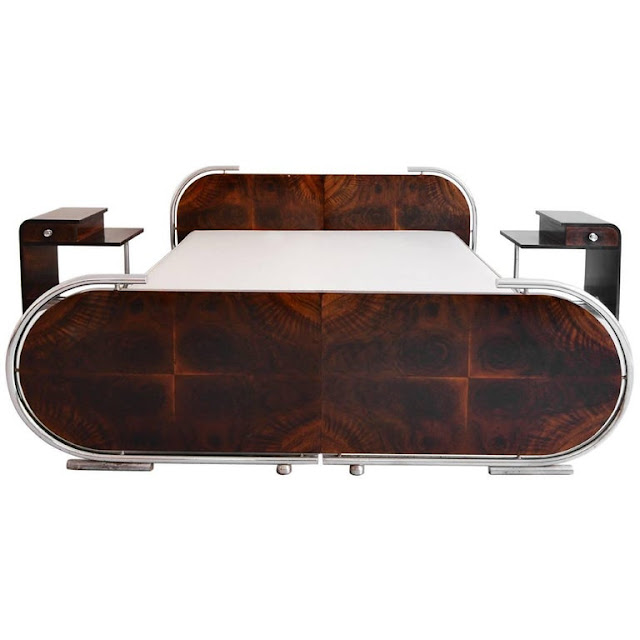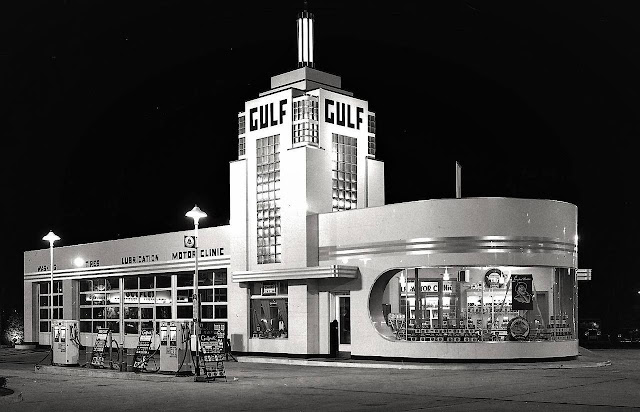Emerging in the 1930s from the modern (at the time) aerodynamic design principles developed for airplanes, trains, and especially ocean liners, Streamline Moderne was applied to architecture as well as interiors, products, furniture, and furnishings. It was a sleeker, pared down version of the decorative elements of Art Deco.
Objects made in the Streamline Moderne style have several important elements in common: they tend to have smooth, polished surfaces--almost always curved--with a strong emphasis on horizontal line.
As I mentioned, ocean liners played a large role in shaping the look of Streamline Moderne. Interiors deliberately looked like rooms and deluxe suites on cruise ships of the period. Metallics, chrome, colored mirrors, and silver leaf were abundant.
A good example of Streamline Moderne furniture can be found in the work of Irish furniture designer and architect Eileen Gray. Starting in 1925, Gray created her villa, the E-1027 house at Cap Martin, France, Roquebrune which is between Monaco and Menton. She designed it to look like an ocean liner at sea, and she furnished it with some of her best known creations: the Transat chair (previously here) made to look like a deck chair on a ship, and the iconic E-1027 Side Table (previously here).
..along with two landmarks local to me: the Maritime Museum in the former Aquatic Park Bathhouse Building, as well as the Golden Gate Bridge (the largest example of Streamline Moderne architecture and the only Streamline Moderne bridge in the world!).
Happy designing!
































No comments:
Post a Comment